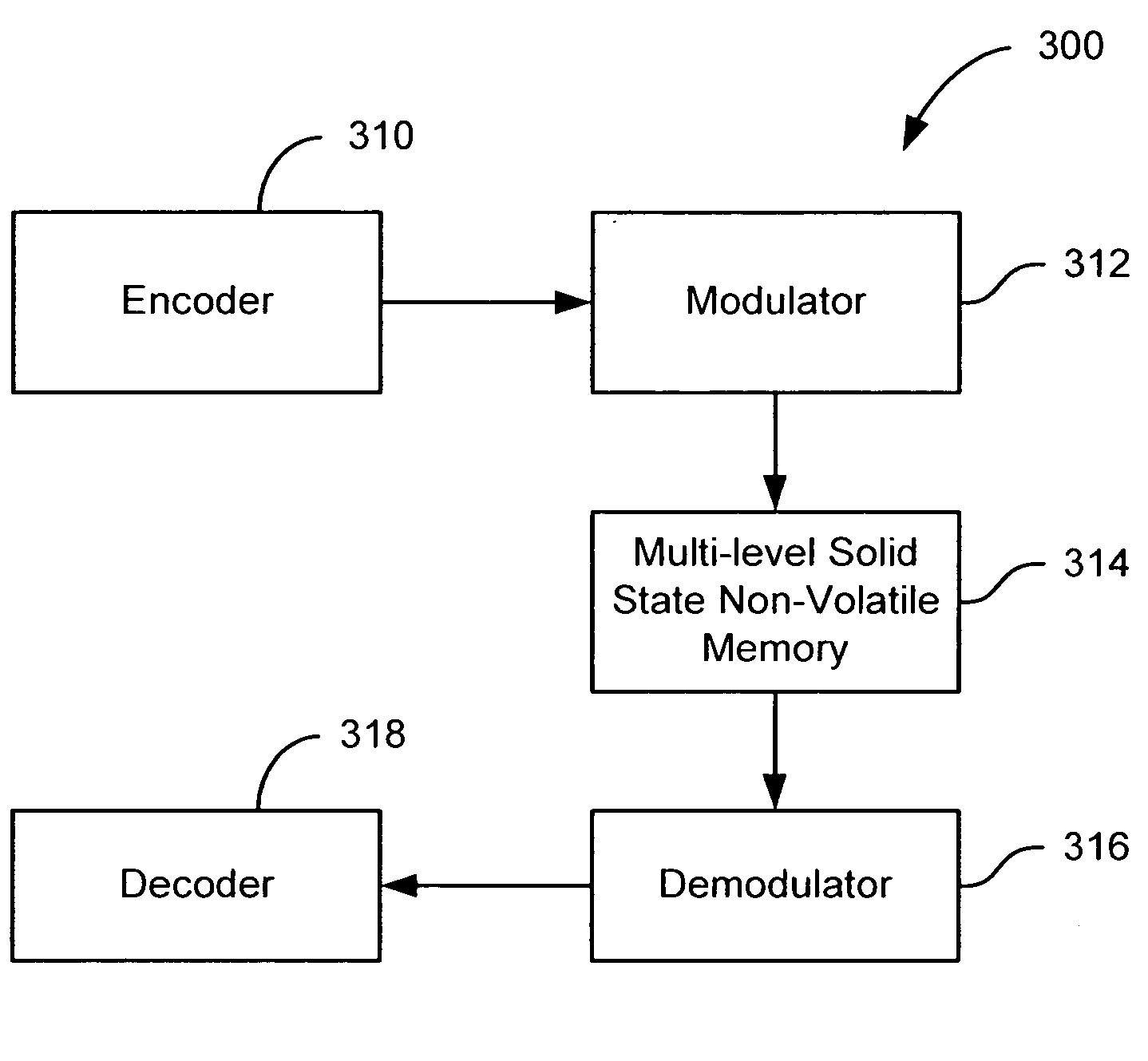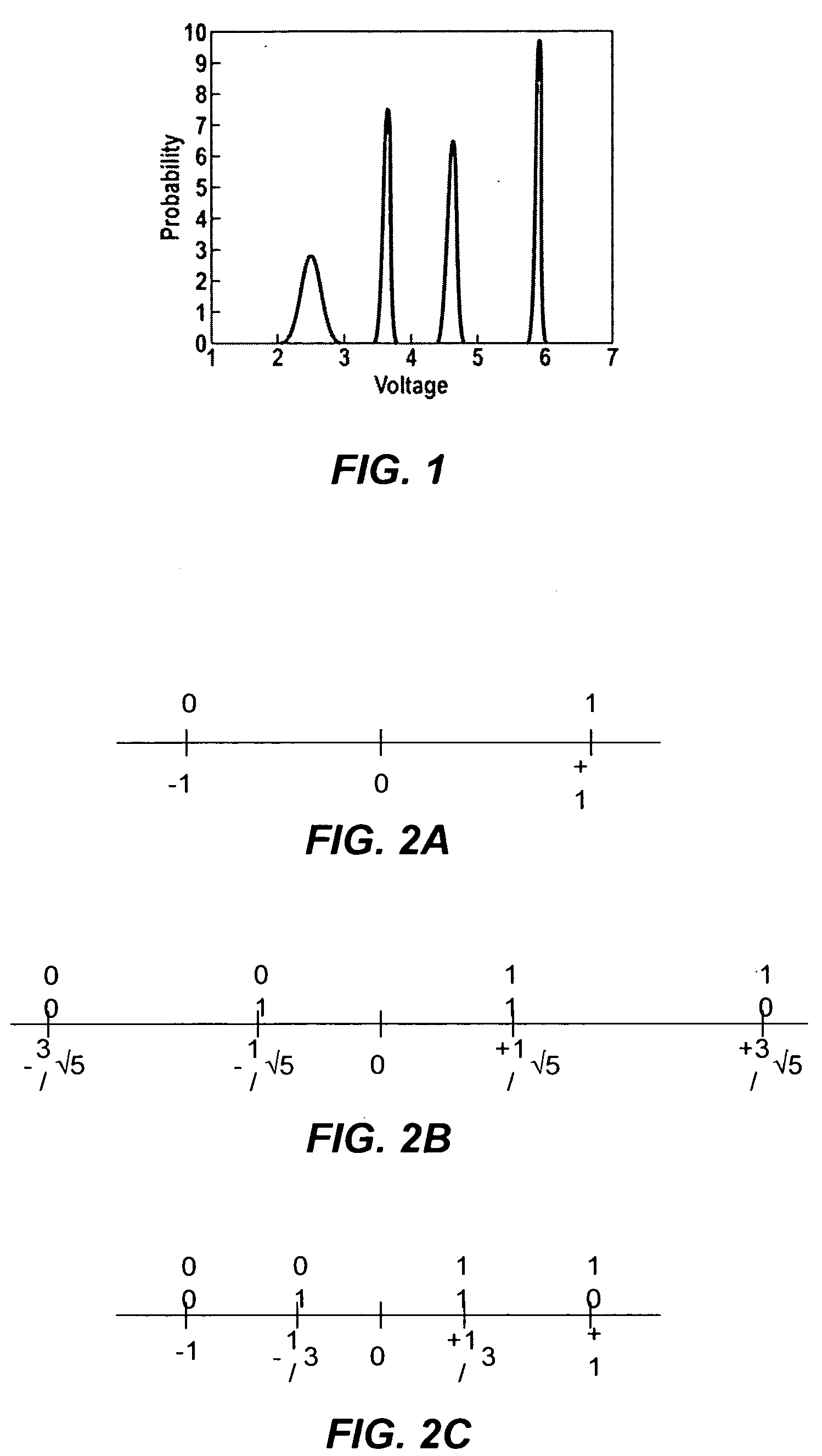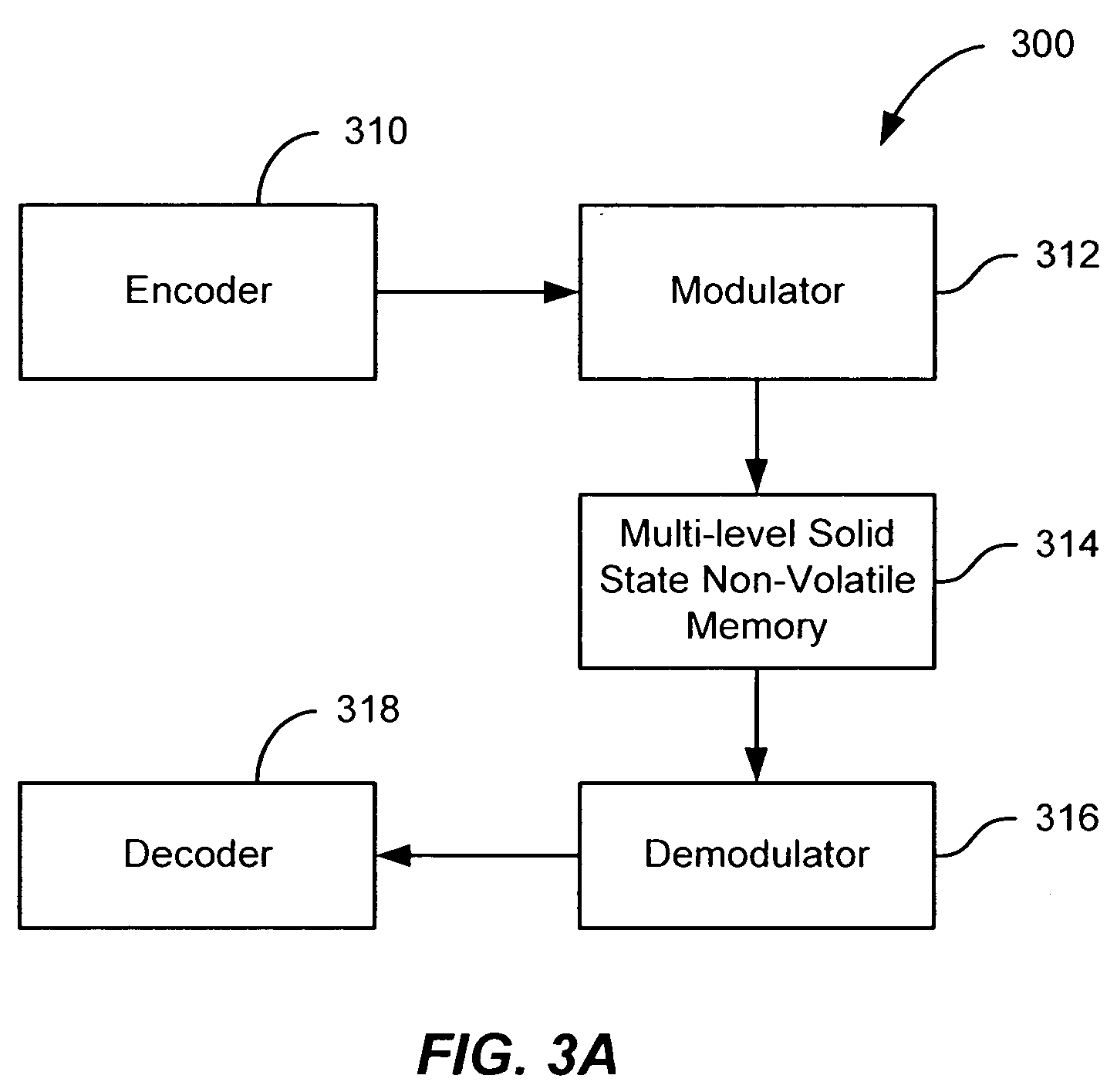Flash memory with coding and signal processing
a flash memory and signal processing technology, applied in the field of integrated circuits, can solve the problems of incorrect level storage in the cell, more difficult to transfer multiple discrete units of charge to a capacitive cell than it is simply, and easy to fail to transfer multiple discrete units of charg
- Summary
- Abstract
- Description
- Claims
- Application Information
AI Technical Summary
Benefits of technology
Problems solved by technology
Method used
Image
Examples
Embodiment Construction
[0050]FIG. 2A is a constellation diagram for an uncoded one bit PAM (pulse amplitude modulation) scheme according to which, information is stored as either a 0 (−1 volts) or a 1 (+1 volts). FIG. 2B is a constellation diagram for a two-bit data modulated using a PAM scheme. The four states defined by the two bits, namely states (00, 01, 10, and 11) are mapped to one of four possible levels, for example, −3 / √5 volts, −1 / √5 volts, +1 / √5 volts, and +3 / √5 volts. Given these voltages, both the 2-points PAM (2-PAM) and the 4-points PAM (4-PAM) with ½ code rate provide a 1 bit / cell spectral efficiency and are characterized by equal power. For the modulation scheme illustrated by FIG. 2B, the 4-state code with Gray mapping reduces bit error rate over the 4-state natural mapping.
[0051]In solid state non-volatile memory devices, the maximum voltage applied at the floating gate limits the maximum voltage available for mapping of multi-level symbols. This voltage limitation results in a peak con...
PUM
 Login to View More
Login to View More Abstract
Description
Claims
Application Information
 Login to View More
Login to View More - R&D
- Intellectual Property
- Life Sciences
- Materials
- Tech Scout
- Unparalleled Data Quality
- Higher Quality Content
- 60% Fewer Hallucinations
Browse by: Latest US Patents, China's latest patents, Technical Efficacy Thesaurus, Application Domain, Technology Topic, Popular Technical Reports.
© 2025 PatSnap. All rights reserved.Legal|Privacy policy|Modern Slavery Act Transparency Statement|Sitemap|About US| Contact US: help@patsnap.com



